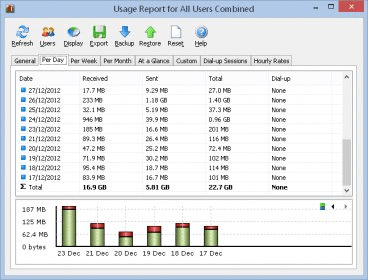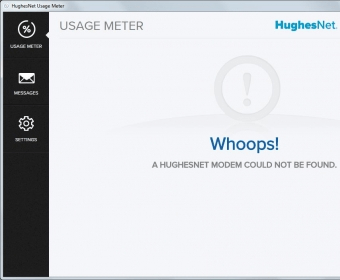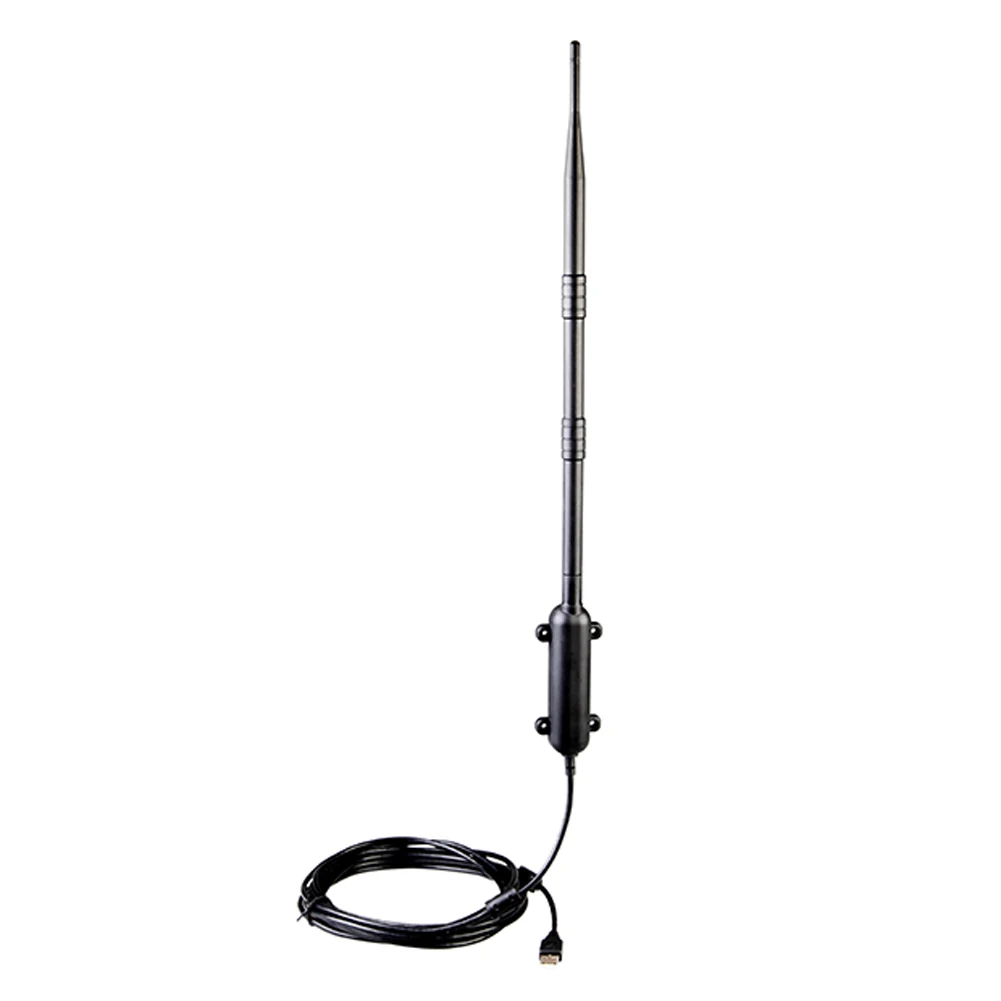

- #Hughesnet usage meter for mac for free#
- #Hughesnet usage meter for mac how to#
- #Hughesnet usage meter for mac mac os x#
- #Hughesnet usage meter for mac archive#
The obvious culprits were easily found, but a real-world Mac OS X system is full of software that fires up as needed in the background, and that’s easily overlooked.

Then I’ll share some thoughts about a proposed utility that could help us automatically reduce our bandwidth use when desired.įind and Track the Talkers - The main obstacle I ran across in researching this topic was determining how best to figure out which of the many daemons, background applications, and Apple components transfer more than a handful of kilobytes per day. In the rest of this article, I’ll explain how, when you find yourself in one of these low-bandwidth or high-price situations, you can figure out which applications are blindly consuming bandwidth and then throttle, pause, or quit them.

If there’s interest, we’ll look into a separate article about that topic in the future.)
#Hughesnet usage meter for mac how to#
(I won’t be discussing a related situation, which is how to deal with permanently low-bandwidth scenarios, whether in the American hinterlands where dial-up modem or low-speed satellite are the only options, or in developing nations in which expensive low-speed cellular connections or dial-up modems over pricey landlines are all that are available. In many other countries, instead of charging overage fees, mobile carriers throttle accounts to between 64 and 256 Kbps after a threshold is reached.

In the United States, cellular providers now typically levy surcharges when you exceed a fixed amount of data in a plan, whether 300 MB, 2 GB or 10 GB. The CSS guru Eric Meyer told me about a 50 Mbps connection used at his An Event Apart design conference being accidentally hogged by a speaker’s corporate backup software kicking in.Īnd while you can sometimes carve out sufficient bandwidth for your needs by switching to a mobile broadband connection and tethering your computer, usage limits on mobile broadband mean that you have to start counting bytes. January 2012, and Joe Kissell experienced huge frustration when sharing on-ship Wi-Fi during a recent MacMania river cruise (the Internet connection in the latter case came from multiple bonded 3G cellular data connections). These scenarios aren’t hypothetical - Adam Engst found his hotel Internet connectivity too slow to use at times during Macworld | iWorld in The hotel Wi-Fi that used to be sufficient for checking email and editing files in Google Docs now struggles with even such low-bandwidth tasks, thanks to all the other people watching Netflix, backing up via CrashPlan, and synchronizing files via Dropbox. Amtrak even warns users of this problem with their “continuous” Wi-Fi service, as I found while working on this article during a train trip between Seattle and Portland.īut our computers are also to blame, due to software assuming it has an always-available, high-speed Internet connection. Public Wi-Fi networks, whether in hotels, at conference centers, in coffee shops, or on an airplane or cruise ship, are increasingly becoming less reliable to use, thanks in part to heavier use of video and the large number of smartphones and iPads. Limited bandwidth situations are also becoming a tragedy of the commons, where a small number of people can ruin it for everyone else. An automated backup agent, a sync service program, background email checking, and even Apple’s automatic software updates could leave us frustrated by network performance or shocked by a too-large bill. With broadband Internet connections, computer makers first made the transition to assuming always-on connectivity, and in the past decade those assumptions have evolved into software and services expecting an always-big bandwidth pipe.īut those assumptions aren’t always true even now, because the more mobile we become, the more likely we find are to ourselves in places in which we either have too little bandwidth available or are paying too much for the bandwidth our computers want to consume. This is a relatively recent development - it wasn’t all that long ago that we relied on 56 Kbps (or slower!) modems for our Internet connectivity, meaning our computers had to assume that Internet connectivity was both intermittent and constrained. Our computers chat all day long with Internet servers near and far, and we can usually remain blissfully unaware of how much data they send and receive, so long as we’re using a high-speed Internet connection.
#Hughesnet usage meter for mac archive#
#Hughesnet usage meter for mac for free#
#1629: iOS 16.0.2, customizing the iOS 16 Lock Screen, iPhone wallet cases, meditate for free with Oak.#1630: Apple Books changes in iOS 16, simplified USB branding, recovering a lost Google Workspace account.#1631: iOS 16.0.3 and watchOS 9.0.2, roller coasters trigger Crash Detection, Medications in iOS 16, watchOS 9 Low Power Mode.


 0 kommentar(er)
0 kommentar(er)
